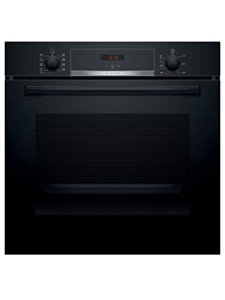Five Killer Quora Answers On Builtin Oven
페이지 정보

본문
The Comprehensive Guide to Built-In Ovens: Features, Benefits, and FAQs
Built-in ovens are a popular option for modern cooking areas, using versatility, performance, and a sleek design that incorporates perfectly into kitchen cabinetry. This article will look into the numerous elements of built-in ovens, including their features, advantages, installation choices, upkeep pointers, and responses to commonly asked questions.
What is a Built-In Oven?
A built-in Builtin oven is created to be installed within kitchen cabinetry and is readily available in various configurations, such as single or double ovens. Unlike freestanding ovens, built-in designs supply a structured look and provide more versatility in kitchen style. They are available in electric, Builtin Oven gas, and steam options, dealing with a series of cooking choices.
Functions of Built-In Ovens
Built-in ovens are packed with functions that enhance cooking experiences. Here are a few of the most common functions to think about:
| Feature | Description |
|---|---|
| Self-Cleaning | Lots of models consist of a self-cleaning function that burns off residue at heats, streamlining upkeep. |
| Convection Cooking | This feature utilizes a fan to circulate hot air, cooking food more uniformly and quickly. |
| Smart Technology | Some ovens come equipped with Wi-Fi connectivity, allowing users to control the oven from another location by means of smart device. |
| Numerous Cooking Modes | Include alternatives such as baking, broiling, roasting, and air frying, providing flexibility for different dishes. |
| Temperature level Probe | Keeps an eye on the internal temperature of food, ensuring completely cooked meals each time. |
| Sleek Design Options | Available in numerous surfaces (stainless steel, black, white) to match kitchen decoration. |
Benefits of Built-In Ovens
The installation of a built-in oven brings numerous advantages to any kitchen:
- Space Efficiency: Built-in ovens make the most of kitchen space, providing a clean and orderly appearance without compromising functionality.
- Improved Cooking Performance: With innovative functions like convection cooking and exact temperature controls, built-in ovens typically outperform traditional designs.
- Design Flexibility: These ovens can be set up at eye level, permitting easy gain access to without flexing down, which can be specifically advantageous for people with physical restrictions.
- Improved Resale Value: A well-designed kitchen with high-quality built-in appliances might appeal to potential buyers, improving general home value.
- Customization Options: Many brands provide adjustable styles that fit the specific measurements and aesthetic of specific kitchen areas.
Installation Options
When choosing a built-in oven, comprehending the setup choices is essential. Here are the most typical setups:
Single built in oven to buy-In Oven: Ideal for smaller sized kitchens, these systems use enough area to prepare a range of meals all at once, best for everyday cooking.
Double Built-In Oven: Best suited for passionate cooks and large households, double ovens enable for synchronised cooking at 2 various temperatures, suitable for meals that need different cooking approaches.
Mix Steam and intergrated oven and hob: A hybrid option that integrates the advantages of traditional baking with steam cooking. This alternative is excellent for retaining moisture in foods, making it perfect for baking bread or roasting meats.

Upkeep Tips for Built-In Ovens
Maintaining a built-in oven is essential for its durability and optimum efficiency. Here are some useful maintenance pointers:
Regular Cleaning: Use the self-cleaning feature when required, and wipe down the outside and interior surfaces frequently to prevent grease accumulation.
Examine the Seals: Inspect the oven door seals for builtin oven any wear or damage to make sure proper insulation and cooking efficiency.

Temperature Calibration: Occasionally check the temperature precision using an oven thermometer, especially if cooking times seem longer than typical.
Ventilation: Ensure sufficient ventilation around the oven to avoid getting too hot, specifically for built in ovens-in designs that might be surrounded by kitchen cabinetry.
Frequently Asked Questions About Built-In Ovens
1. Are built-in ovens more costly than freestanding models?Yes, buy built in oven-in ovens tend to be more costly due to their style, setup requirements, and extra features. However, their advantages can validate the expense in the long run.
2. Can you install a built-in oven yourself?While some handy people may try to install a built-in oven, it is suggested to employ an expert to make sure appropriate installation, ventilation, and security standards.
3. What is the typical life-span of a built-in oven?The normal life expectancy of a built-in oven is around 10 to 15 years, depending upon usage and upkeep. Regular care can assist extend its longevity.
4. Are built-in ovens energy efficient?Many contemporary built-in ovens are designed with energy performance in mind, including features like insulation and precise temperature level controls that might reduce energy intake compared to older designs.
5. Can a built-in oven be fixed if it breaks?Yes, built-in ovens can often be fixed. It is suggested to get in touch with a qualified professional for medical diagnoses and repairs to guarantee safety and compliance with warranty contracts.
Built-in ovens are an outstanding addition to any contemporary kitchen, providing a mix of design, functionality, and advanced cooking features. With the right knowledge about their functions, advantages, and upkeep, property owners can make educated choices to improve their culinary experiences. As kitchen style patterns continue to progress, the built-in oven remains a staple for those looking to mix visual appeals with performance in their cooking spaces.
- 이전글12 Facts About Porsche Key Fobs To Bring You Up To Speed The Water Cooler 25.05.20
- 다음글How Can A Weekly ADHD Tests Project Can Change Your Life 25.05.20
댓글목록
등록된 댓글이 없습니다.



